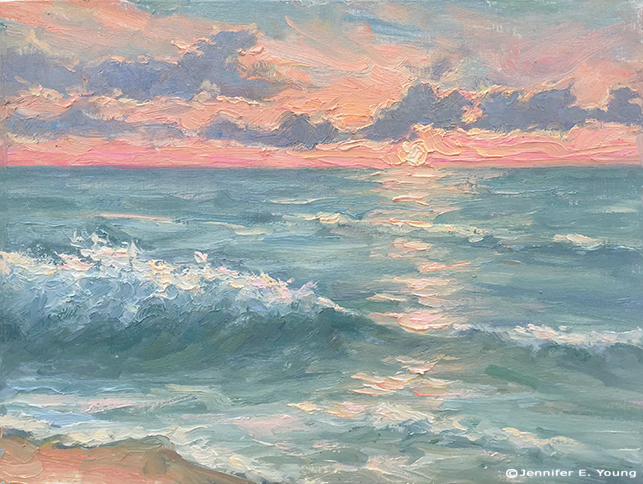Sunrise Stroll
/Back in spring as I was packing up and/or discarding my earthly belongings, I had imagined that by fall we would have begun working on a new studio at the new house. "Oh, I'll be up and running by winter," I thought. Well, I may have been a "tad" optimistic as we haven't come close to deciding how or even where we will fashion one. In light of the constant waffling, we finally decided to rent a little temporary workspace for me, to take the pressure off a bit.
Viola! My little space. It's certainly a far cry from my former studio. It's tiny, it's dark, it's plain...but it's mine (at least temporarily). And I couldn't be happier to be back at work. :-)
What's missing in this picture is, of course, the easel. I will keep things simple (and light) by using my Soltek in here. I have also added a few additional lights to brighten things up a bit and make things a bit easier on the eyes.
To kick off the occasion, I dove into a subject I have been dying to develop since I painted it on location this summer- The Outer Banks of North Carolina. I was especially keen to dive into the concept of the sunrise, having tackled in en plein air in July:
Because I am renting this space and the ventilation is poor, I will only use water miscible oils here. So this, friends, marks another inaugural moment, of sorts--my first studio painting with Royal Talens Cobra water miscible paints. I have to say, I am loving these paints in the studio. They stay open longer than my traditional oils, which makes it easier to manipulate edges and build up to lovely, lush texture without having to do it all alla prima. The only criticism I have at the moment is that the Titanium White in this brand is rather weak. Maybe I just need to get used to the tinting properties of the other paint colors, but I used almost half of a 150 ML tube of paint on this one 20x24" painting. (And that's not *much* of an exaggeration.) Otherwise, though, I am having a great time and am so happy to have a room to call my own to create and leave all of my toys lying about.

















